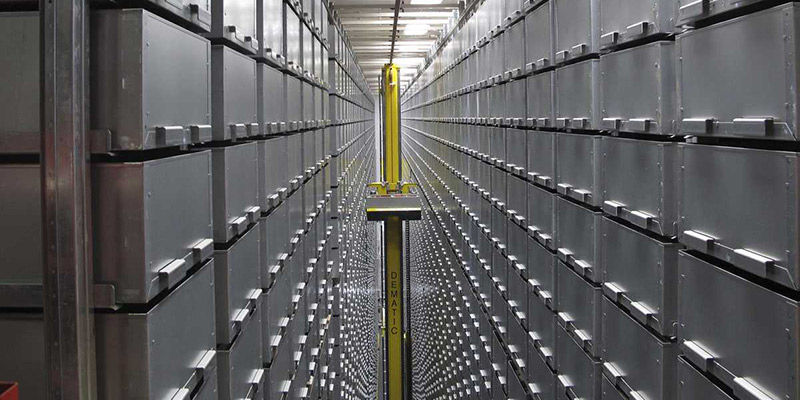Book retrieval powered by robot in new library
A space-saving BookBot retrieval system will allow more room for learning in Temple’s new library.

If you don’t already associate robots with libraries, that might change.
Plans for Temple’s new Main Campus library include BookBot, a revolutionary robotic book retrieval and delivery system. The system will make it possible to use less space for book storage, giving way to increased space for learning.
When Paley Library was constructed in the 1960s, roughly 70 percent of the space was designated for book storage. The new library dedicates just 40 percent of its space to books.
“[Paley is] a big, square warehouse with user space at the margins—literally around the exterior of the building. It was thought of as a warehouse for books,” Joseph Lucia, Temple’s dean of libraries told WHYY’s The Pulse. “In 2016, we don’t think of libraries in quite the same way.”
In fact, Temple’s new library will be focused much more on the user. The space freed up by BookBot will be designated for classrooms, meeting rooms and digital immersive visualization studios.
The additional space for users does not come at the cost of books. The new library will still house the same number of books and publications as Paley—around two million—they’ll just be organized differently.
There will still be the traditional stacks with approximately 200,000 titles searchable by hand. But as reported by The Pulse, the BookBot system saves space by storing other titles inside metal bins, which are stacked inside five bays, each a matrix 55 feet high and 150 feet long. When library visitors want a particular book that is not in the stacks, they will search a database, which is is connected to a robotic crane that will retrieve the requested title.
“[Users] will click a button that says ‘Get This Item,’ which dispatches a command to the software,” said Lucia. “The robot will activate a crane to go to the bin, pull that bin and bring [the book] to a pickup point. A member of the staff will open the bin, find the book and put it on a pickup shelf.”
Related stories:
New library will redefine Temple campus and academic experiences
Philadelphia design committee praises new library plan
Library research meets the digital age